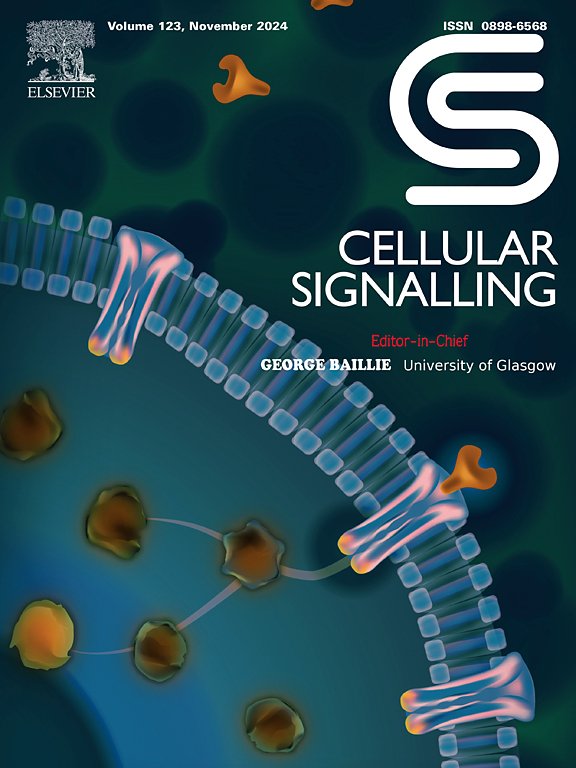METTL14 promotes TBK1 mRNA stability through IGF2BP3-recognized m6A modification and enhances mitophagy in BMSCs
IF 3.7
2区 生物学
Q2 CELL BIOLOGY
引用次数: 0
Abstract
Osteoporosis, particularly postmenopausal osteoporosis, represents a growing global health challenge characterized by impaired bone remodeling and increased fracture risk. The impairment of bone regeneration manifests in the field of oral and maxillofacial medicine as delayed alveolar bone healing after tooth extraction and poor osseointegration of dental implants, significantly compromising oral functional rehabilitation. This study investigates the role of METTL14 in osteogenic differentiation and its potential regulatory mechanisms in bone metabolism. We identified differential expression patterns of METTL14 in bone marrow-derived mesenchymal stem cells (BMSCs) between osteoporotic patients and healthy controls. Through loss-of-function experiments, we further demonstrated the critical role of METTL14 in promoting osteogenic differentiation, providing direct evidence for its functional importance in bone metabolism regulation. Transcriptome sequencing analysis revealed a significant association between METTL14 and mitophagy. JC-1 assay, Mitosox assay, mt-Keima assay, western blotting and immunofluorescence demonstrated METTL14's positive regulatory role in mitophagy, with TBK1 identified as the most significantly altered downstream target through qRT-PCR and rescue experiments. We further elucidated that IGF2BP3, an m6A reader, promotes osteogenesis and regulates TBK1 mRNA stability, as evidenced by Actinomycin D treatment and mitochondrial-lysosomal colocalization assays. In vivo experiments showed that METTL14 overexpression enhanced alveolar bone healing in ovariectomized osteoporotic mice. These findings provide novel evidence supporting METTL14 as a potential therapeutic target for osteoporosis.
METTL14通过igf2bp3识别的m6A修饰促进TBK1 mRNA的稳定性,并增强骨髓间充质干细胞的自噬。
骨质疏松症,特别是绝经后骨质疏松症,是一种日益严重的全球健康挑战,其特征是骨骼重塑受损和骨折风险增加。骨再生障碍在口腔颌面医学领域表现为拔牙后牙槽骨愈合延迟和种植体骨整合不良,严重影响口腔功能康复。本研究探讨了METTL14在成骨分化中的作用及其在骨代谢中的潜在调节机制。我们确定了骨质疏松症患者和健康对照者骨髓间充质干细胞(BMSCs)中METTL14的差异表达模式。通过功能缺失实验,我们进一步证明了METTL14在促进成骨分化中的关键作用,为其在骨代谢调节中的功能重要性提供了直接证据。转录组测序分析显示METTL14与线粒体自噬之间存在显著关联。JC-1实验、Mitosox实验、mt-Keima实验、western blotting和免疫荧光实验均证实METTL14在线粒体自噬中具有正调控作用,通过qRT-PCR和救援实验确定TBK1是下游改变最显著的靶点。通过放线菌素D治疗和线粒体-溶酶体共定位实验,我们进一步阐明了IGF2BP3,一个m6A读取器,促进骨形成并调节TBK1 mRNA的稳定性。体内实验表明,METTL14过表达促进了去卵巢骨质疏松小鼠的肺泡骨愈合。这些发现提供了新的证据,支持METTL14作为骨质疏松症的潜在治疗靶点。
本文章由计算机程序翻译,如有差异,请以英文原文为准。
求助全文
约1分钟内获得全文
求助全文
来源期刊

Cellular signalling
生物-细胞生物学
CiteScore
8.40
自引率
0.00%
发文量
250
审稿时长
27 days
期刊介绍:
Cellular Signalling publishes original research describing fundamental and clinical findings on the mechanisms, actions and structural components of cellular signalling systems in vitro and in vivo.
Cellular Signalling aims at full length research papers defining signalling systems ranging from microorganisms to cells, tissues and higher organisms.
 求助内容:
求助内容: 应助结果提醒方式:
应助结果提醒方式:


